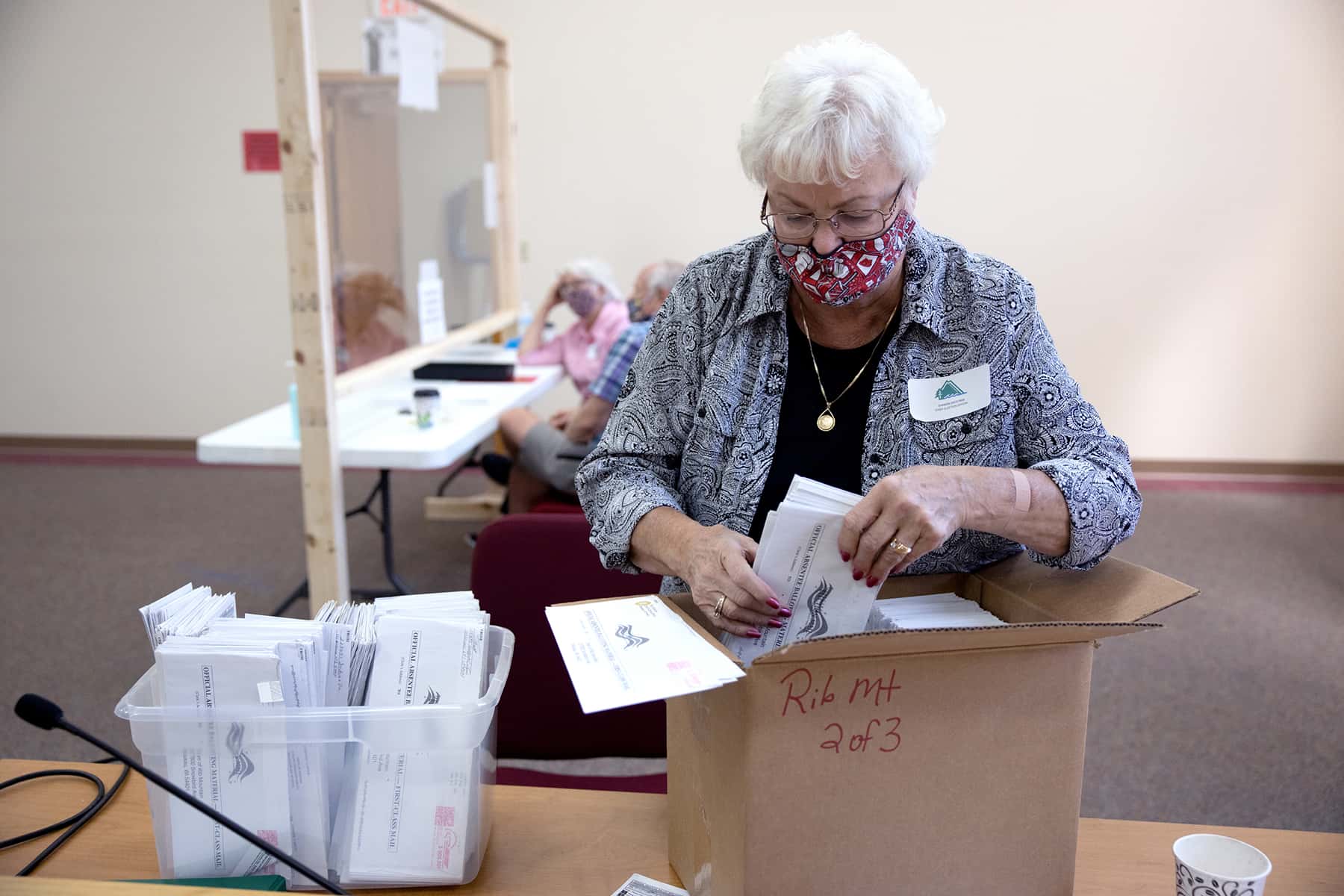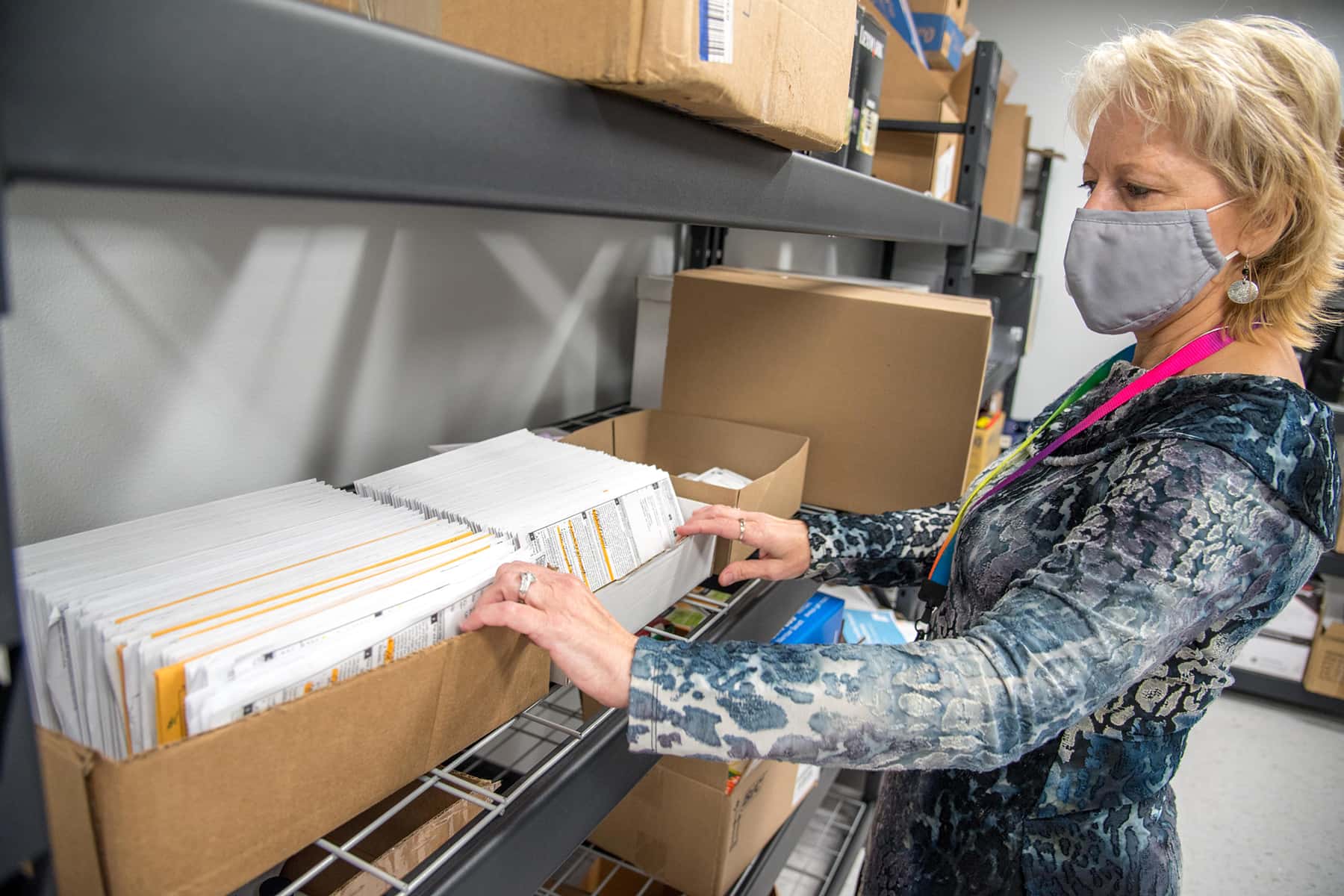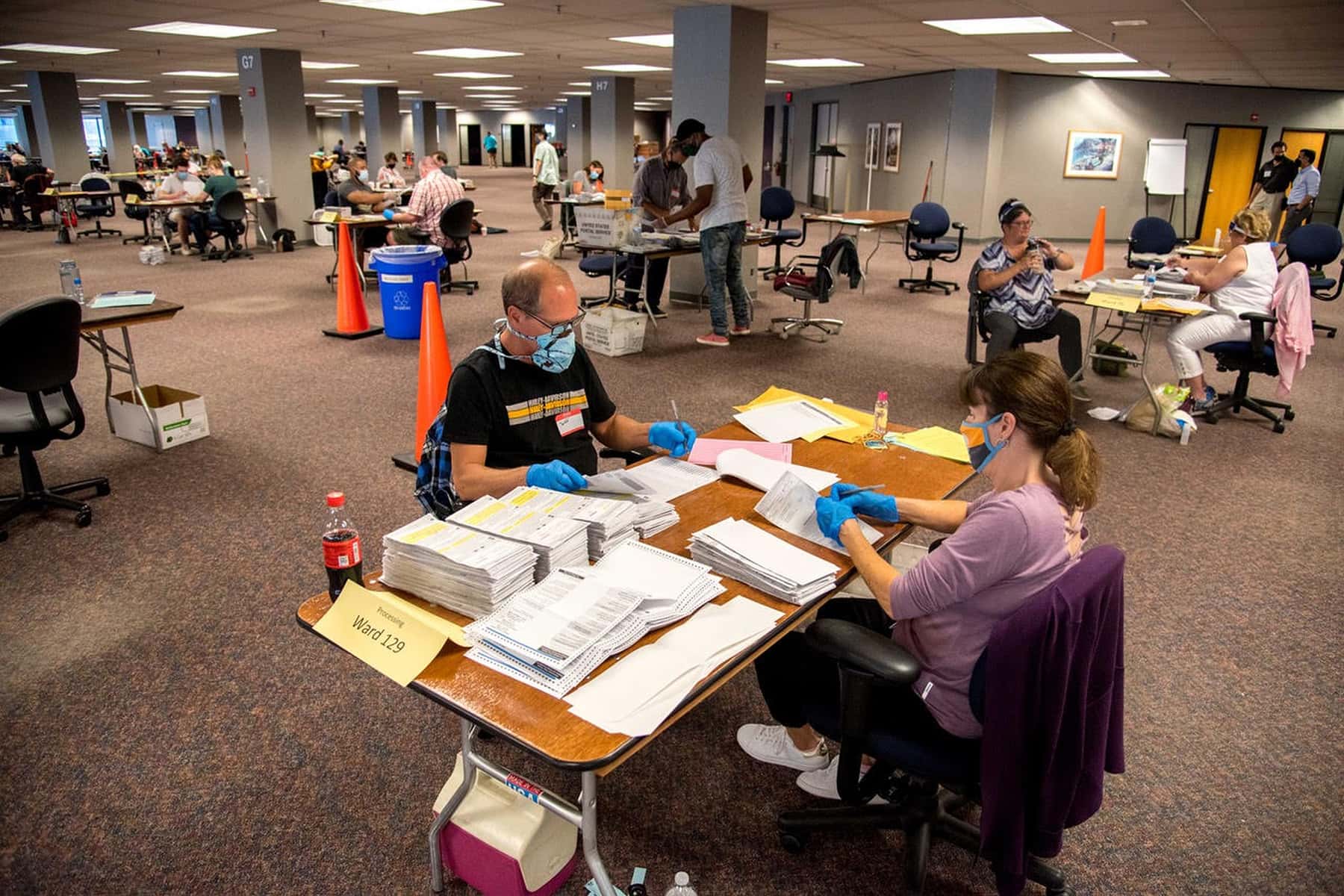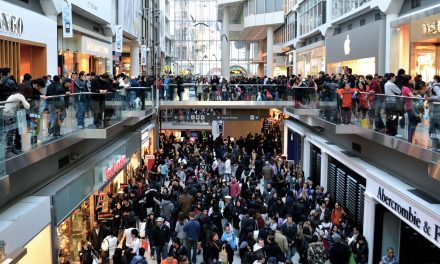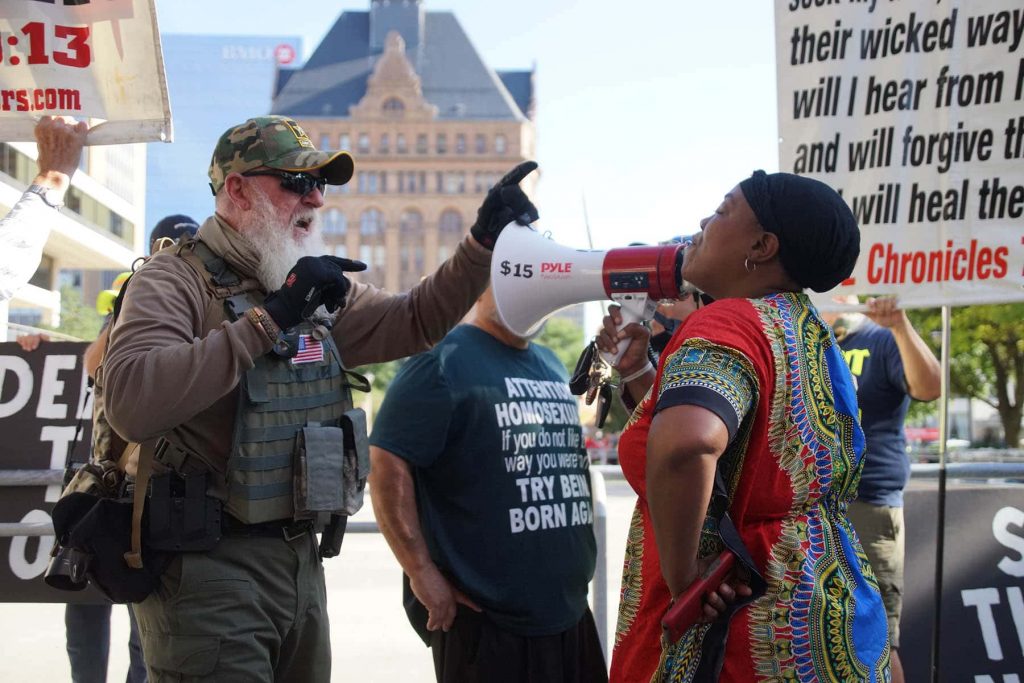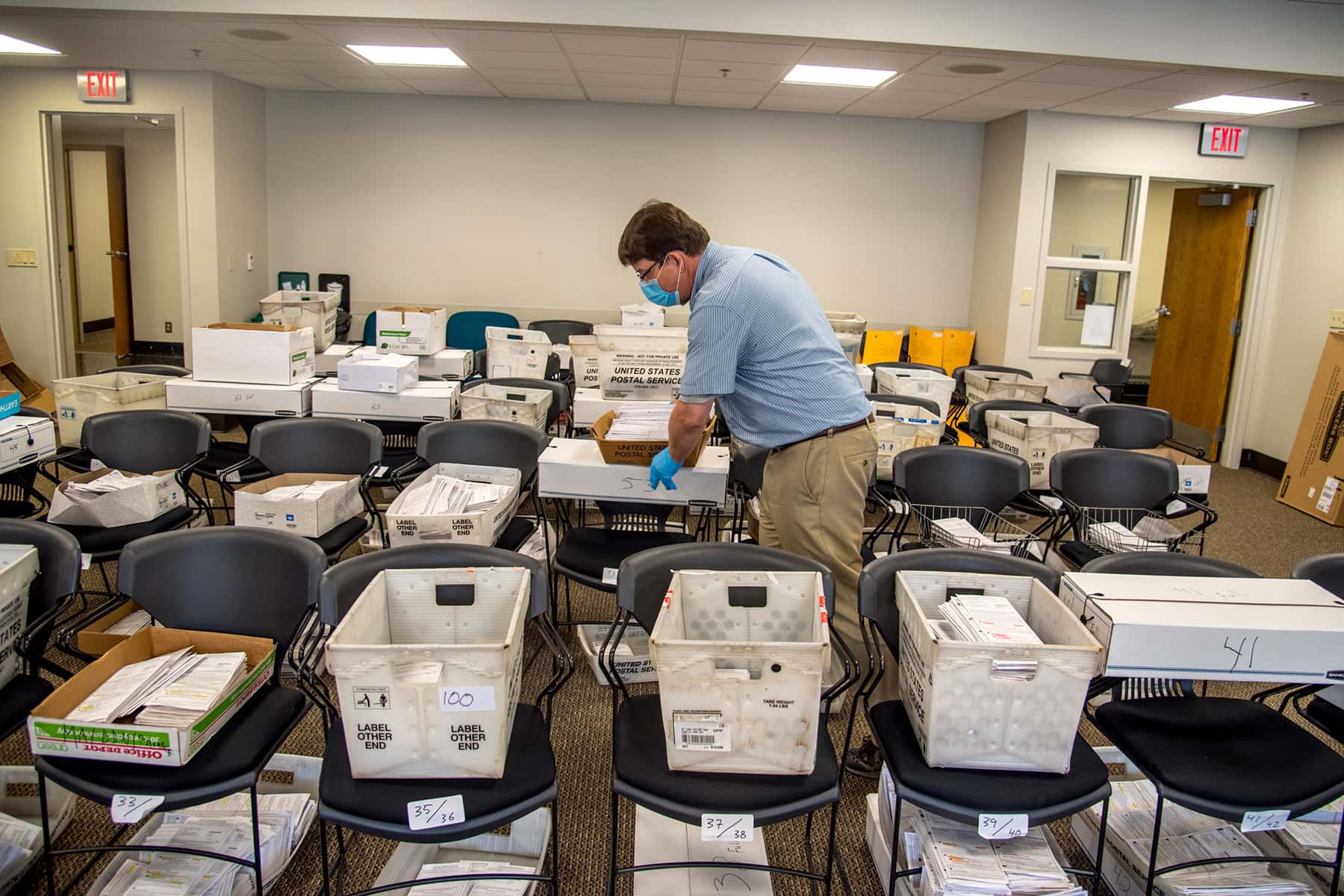
The U.S. Postal Service is not meeting goals for on-time mail delivery, a worrying sign as millions of Americans are expected to vote by mail in November.
Based on its own performance measures — and the loss of hundreds of Wisconsin ballots on their way to voters this summer — the U.S. Postal Service has its work cut out for it before Election Day. Among the 13 postal districts serving key presidential battleground states, four failed to meet any on-time service goals handling first-class mail between April 1 and June 30, and six districts achieved only one.
The laggards are in, or in parts of, five battleground states — Pennsylvania, Michigan, Florida, Wisconsin and North Carolina — politically competitive blends of urban and rural voters that will likely determine the presidential election. The postal service district serving Arizona, also expected to be a highly competitive state but with voters who typically vote by mail, hit both delivery targets.
Three of the postal districts that missed both targets represent the largest metropolitan areas in their respective states — Philadelphia, Detroit and Milwaukee, Democratic strongholds in states that propelled Donald Trump to victory in 2016.
The 13 districts were not outliers compared to the rest of the country. More than half of the nation’s 67 postal districts failed to meet any first-class mail delivery goals, and 23 only met one.
And the below-par delivery performance in districts representing parts of Wisconsin, Michigan, and Florida — where the presidential campaigns are spending millions — continues a trend: They have missed targets more often than many other districts across the country since the end of 2016.
Any other year, perhaps any other election year, a steady underperformance of mail delivery in swing states would go unnoticed. This year, though, the arcane, unremarkable metrics — Service Performance Management Data — have taken on outsized importance: They may foreshadow the hot spots of a ballot counting controversy on Election Day and the days that follow.
“I believe it is highly likely that in the November General Election, the absentee ballots of at least tens of thousands of voters will arrive at election offices after Election Day and will not be counted unless the Ballot Receipt Deadline is extended,” wrote Ronald Stroman, the deputy postmaster general of the United States Postal Service from 2011 until June 1, in a recent court filing challenging the Wisconsin deadline for ballot submission.
Delays spark partisan concerns
Democrats, in particular, are worried about on-time mail arrival deadlines in other states, as well. While some allow for mailed ballots to be accepted if postmarked on Election Day, other battleground states – Pennsylvania, Michigan and Florida — require ballots to be in the hands of elections officers on Election Day. Lawyers representing Democrats, voting rights and civil rights groups are suing to allow ballots to count even if the ballot envelopes have not yet arrived at polling sites but are postmarked by Election Day.
Compared to the same period one year ago and to the first three months of 2020, on-time mail delivery nationally is suffering as a result of the coronavirus pandemic, presenting a worrisome picture of how mail service could be hindered as a rapidly rising number of people choose to steer clear of COVID-19 and vote by mail in November.
“When I have people telling me that they’re going days without getting mail, that makes me nervous,” said Tina Barton, city clerk for Rochester Hills, Michigan. Her anecdotal evidence is confirmed by the data from Detroit’s postal district in the last quarter, which reported the second worst on-time scores in the nation. The on-time delivery of Michigan’s other postal district, which represents the western and northern parts of the state, was also near the bottom in the last quarter.
There’s also worry — mostly among Democrats — that such delays could worsen under recent management changes by U.S. Postmaster General Louis DeJoy, a major donor to the Republican National Committee and to President Trump, who has repeatedly falsely claimed that mail-in voting is rife with fraud.
Three months into the job, DeJoy has ended overtime and insisted that trucks leave on time even if mail isn’t fully loaded. The concern is shared by people who study the post office, the head of a union representing 200,000 current and retired postal workers and voting experts.
“There’s always been a sense that the postal system will be there in a nonpartisan way to deliver the mail,” said Edward B. Foley, election law director at the Moritz College of Law at The Ohio State University. “This is the first time in my experience of studying elections that there’s a genuine fear that the postal system will be manipulated in a subversive way.”
A spokeswoman for the postal service declined an interview request but issued a statement saying, “The United States Postal Service is committed to fulfilling our role in the electoral process when public policy makers choose to utilize us as a part of their election system.” She also pointed APM Reports to recent remarks by DeJoy where he said delivery standards that have been in place for many years have not changed.
More missing ballots in Wisconsin
The APM Reports analysis also reinforces anecdotal claims that mail delivery has slowed in some cities. Over the past decade, the consolidation of postal service processing centers now means mail can sometimes travel hours for processing and sorting even if the destination is blocks away from where it was mailed.
Concerns over mail delivery are coming alarmingly true in Wisconsin, where election officials continue to have problems with ballots not being delivered to voters. Nearly 700 voters in the cities of Milwaukee and Wauwatosa did not receive ballots they requested in late June for the August 11 primary.
The previously unreported missing deliveries follow April’s breakdown when thousands of ballots weren’t delivered on time during the state’s primary. Wisconsin voters, like those in much of the country, continue to request absentee ballots in record numbers through the mail or in person: 894,786 absentee ballots were issued for the August 11 primary — roughly eight times the number of ballots issued in 2016.
The U.S. Postal Service said voters should mail their ballots at least a week before Election Day to ensure on-time delivery, and to request their ballots at least a week before that.
But that advice is meaningless if voters can still request mail-in ballots — also known as absentee ballots — within a week of Election Day. Twenty-four states have laws that allow voters to request an absentee ballot during that time, a potential problem for voters who may think they have time to get the ballot in the mail and send it back.
First-class delays documented
Every three months, the U.S. Postal Service releases data that show on-time delivery for different classes of mail. Nationally, the volume of first-class mail delivery has declined by more than 1.6 billion pieces from the previous quarter because of the pandemic, postal officials said. Still, more than 8.3 billion pieces of first-class mail were processed between April 1 and June 30. Of those, 7.5 billion met service performance standards —meaning 800 million were late.
Because the postal service does not publish performance data for election mail, APM Reports analyzed the on-time percentage scores for first-class mail, the type of mail recommended by the postal service for mailed ballots. Reporters then compared the scores with the postal service’s targets for overnight and two-day delivery standards, which are likely to be applied to mail sent and received locally.
On-time mail delivery mattered during Wisconsin’s April primary. In addition to the failed delivery of hundreds of ballots to voters, 81,000 ballots were delivered after the primary, according to the Wisconsin Elections Commission. Of those, 79,054 ballots were only accepted because of a court ruling.
And while the pandemic may have recently slowed mail delivery across the country, the postal district representing most of Wisconsin has rarely met targets for on-time mail delivery and has often had scores below the national level since late 2016, APM Reports found.
The recent quarterly performance data, captured during the height of Gov. Tony Evers’ shutdown order, confirms what thousands of Wisconsin voters learned since the April primary: The mail does not always come on time. Despite pledges to fix the problems that occurred in April, some ballots are still not being delivered.
Wauwatosa, Milwaukee ballots disappear
Aliza Werner and her husband, Nick, are regular voters but very cautious about going out in public during the pandemic. The couple from Wauwatosa, Wisconsin requested absentee ballots June 25 — six weeks before the election — for the August 11 partisan primary.
Werner said she kept checking myvote.wi.gov, the website operated by the Wisconsin Elections Commission, for the status of their ballots. In June, clerks were able to print barcodes on outgoing ballot mailings that would allow the ballot to be tracked as it traveled through the mail.
“At one point where it said it was in process or was submitted, it was approved, they were preparing it — and it never went beyond that,” Werner recalled.
When ballots didn’t arrive after a month, Werner called the Wauwatosa City Clerk’s Office and was told their ballots had been in a batch that never made it to voters’ homes.
“(The clerk) said that our ballots have been sent out so on their end, they had fulfilled the request,” Werner said. “The only thing that they could think of was that something happened within the postal service, that they were not mailed to us.”
The couple ordered new ballots, which arrived after a few days. Werner said she dropped them off at Wauwatosa City Hall to make sure they arrived.
Werner has been voting absentee on and off for years. But she’s now worried about how well Wisconsin will manage the November election. “I know that there are going to be a whole lot more people that are going to be requesting absentee ballots for the elections in November,” she said.
In Wauwatosa, less than 10 miles west of downtown Milwaukee, a spokeswoman confirmed that 421 ballots mailed in late June to residents were never delivered. Elections officials aren’t sure if the postal service or the city’s mail vendor is at fault. A mail vendor places postage and tracking information on the envelopes for the city. The city clerk canceled the initial ballots and mailed another batch of ballots to the affected voters.
Approximately 270 ballots mailed by the city of Milwaukee on June 29 also went missing. They were accounted for when they were handed over to the vendor, said Claire Woodall-Vogg, director of the Milwaukee Election Commission. She said the cause of the breakdown could not be determined.
Woodall-Vogg said the affected ballots were canceled and new ballots were sent to voters. In November, the city will hand-deliver the ballots to the postal service to ensure there are no problems with a third-party vendor, she said.
Flashback to April 7
The missing ballots in Wauwatosa and Milwaukee come just months after the postal service was criticized for how it handled mail-in ballots during the April primary. On the day of the primary after the polls closed, the postal service discovered three tubs of ballots at the city’s processing center destined for voters in Appleton and Oshkosh. Postal service employees also failed to deliver ballots to voters in Fox Point, and repeatedly returned them to the village without explanation.
The postal service said it is meeting regularly with election officials to discuss election mail and ballot design and will take steps to ensure better monitoring of election mail. In addition to the barcodes now added to many outgoing Wisconsin ballots, the state also plans to issue absentee ballot applications to every registered voter to help take the workload off local elections officials and encourage voters to request a ballot sooner.
Wisconsin’s elections are managed by 1,850 municipal election officials and 72 county election officials. It’s considered the most decentralized state for election administration.
Some election managers are worried that the problems with mail delivery in the primaries will continue in November. “I’ve been assured by our district manager that they will be doing everything they can to make sure all the mail gets delivered timely,” said Barbara Goeckner, an official with the village of Cambridge.
Could postal service changes slow the mail?
But Goeckner, who chairs a U.S. Elections Assistance Commission subcommittee that discusses election-related postal service issues, said she was also wary of the recent operational changes enacted by DeJoy that could lead to slower mail delivery.
“Eventually, there’s going to be hiccups along the way. And I have to say that that is a very big concern across the nation for postal mail, and election mail,” she said.
Stroman, in his court filing, warned that Wisconsin’s problems with mailed ballots will continue unless the ballot deadline is changed. “My experience with voting by mail and my extensive work with elections officials leads me to conclude that Wisconsin’s Spring Election is a predictor of what may occur in Wisconsin’s November General Election, absent necessary changes,” he wrote.
In Lansing, Michigan, mail is processed 65 miles away in Grand Rapids, said Chris Swope, the city clerk. While the consolidation saves money, it can be a problem for voters who wait until the last minute to put their ballot in the mail. “It used to be in Lansing, if you mailed it today, the person in Lansing would get it tomorrow, and that’s generally not true anymore,” said Swope.
DeJoy, who was appointed by the USPS Board of Governors in May, said the post office should not be blamed if state laws allow voters to request and return an absentee ballot that falls outside of the postal service’s guidelines. He also pledged that the postal service could meet the expected demand.
“Although there will likely be an unprecedented increase in election mail volume due to the pandemic, the postal service has ample capacity to deliver all election mail securely and on time in accordance with our delivery standards, and we will do so,” he said.
But his push to overhaul the postal service is what troubles Democrats and voting rights groups. The president has repeatedly criticized the postal service, pushing for higher package fees for Amazon and other shippers. Trump also has repeatedly falsely claimed that mail-in voting is rife with fraud.
Critics worry that DeJoy’s attempts to curtail postal service spending is an underhanded attempt to slow down mail delivery during the presidential election. They said it could affect last-minute voters who decide to request an absentee ballot.
“It’s more likely now that we will be impacted by these delays under this new directive than in the past when we were already concerned with delivery standards,” said Tammy Patrick, an elections mail expert and senior adviser to the Democracy Fund.
Patrick said she has encouraged election managers to set up drop boxes to ensure voters have other options. But they may not be everywhere. For example, Trump’s campaign is suing to prevent the use of drop boxes in Pennsylvania. Officials with the unions representing postal service employees said DeJoy’s efforts to curtail overtime will slow down the delivery of by-mail ballots.
“It’s not going to undermine the integrity of the ballot, the safety of the ballot or the privacy of the ballot,” said Mark Dimonstein, president of the American Postal Workers Union. “But it’s certainly going to make it more challenging for the states who run elections.”
Tom Scheck, Geoff Hing, and Dee J. Hall
Will Cioci and Coburn Dukehart
The nonprofit Wisconsin Center for Investigative Journalism collaborates with Wisconsin Public Radio, Wisconsin Public Television, other news media and the UW-Madison School of Journalism and Mass Communication. All works created, published, posted or disseminated by the Center do not necessarily reflect the views or opinions of UW-Madison or any of its affiliates.

